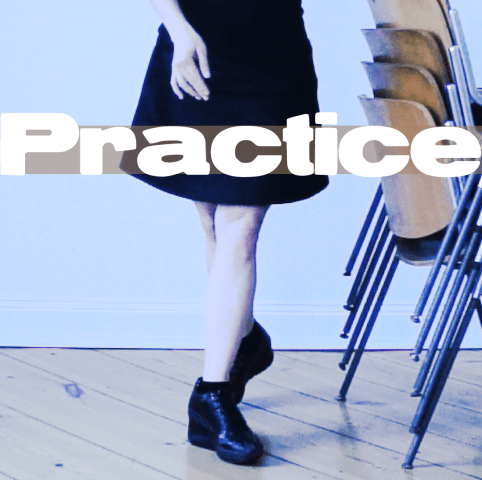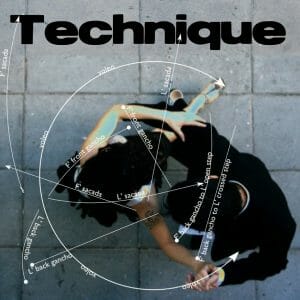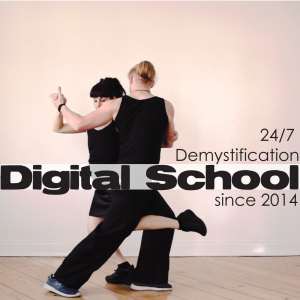
Most dancers’ attention is focused around the chest and shoulders. It’s nice that we are paying attention to our partner’s heart.
Yoga teacher Matthew Cohen says “your legs are these powerful things for moving your heart around the world.” Those big brains and warm hearts don’t move themselves around, do they?
I find that if students simply move their attention to the lower part of the body, and think about dancing from there, they find improvement right away.
I also find that telling revels to “relax your shoulders” is wasted breath. Revels’ shoulders are usually tense because they are off balance and (wisely) trying to seek some support from the mark to avoid the sin of taking an unmarked step. I’ve learned to tell a tippy revel instead “use your legs”. When she moves her attention to her legs, she finds that she has more balance than she thinks and it eases her panic and her grip.
Marks have two related problems: Either they forget to use their legs and instead create a tense and destabilizing mark from arms alone or they’ve already used their legs perfectly but don’t know it and they add excess force with their arms. For both cases: Trust your legs! Let them do the work.
Why are the legs so important?
- Most of our muscle strength is in the lower body.
- They’re connected to the floor. We leverage with the floor to activate the muscles of our legs for balance and drive.
- They’re connected to the core. Activating the leg muscles activates the core muscles. The core muscles enable us to connect and to control our bodies.
Watch video of your favorite world class dancer and watch their legs (not their feet!) Notice the power and control coming from the legs.
How do we dance from the legs?
The number one thing you need to do in order to get your legs to work is to use hip flexion. Your hip bones must never move in front of your rib cage. You might think you are doing this and find you are wrong. Check it out by walking around by yourself with your index fingers touching your hip bones. If your hip bones come in front, you lose all your core activation and your leg muscles disconnect from your upper body.
Hip flexion is the source of your stability and connection to your partner.
The third and most challenging thing you need to do is recognize and vigilantly investigate your dance to make sure you are driving every move from your base leg, rather than throwing your free leg into the movement, or dragging yourself along into it. Some examples:
- In voleos, revels tend to throw their free leg rather than activating their base leg and moving the free leg from the core so that it floats up and around.
- In enrosque and lapiz, revels tend to throw their free leg to create momentum for their pivot because they don’t know how to use the muscles of the base leg to make the pivot. By throwing the free leg, they tend to destabilize themselves and their partner. (These moves should be foregone until the mark masters pivoting in two feet and then pivoting in one foot without adorno.)
- When marking mirrored crosses, marks tend to just cross their own free leg, without creating the diagonal projection from their base leg. This doesn’t create a lead for the revel.
These are some common cases, but you need to check out your basic steps as well. Consider whether you are driving every move from your base leg. You may have some surprising observations.
The last way that our legs can help us dance better is by using the extension of all three joints of the old base leg as we transfer our weight through the step. For revels this creates the second projection (which is where most of the fun happens, so don’t skimp on it!) For marks, deliberate extension of the old base leg increases your control over the step, enabling acceleration and deceleration.
If you feel unstable, ungainly, or you are crashing with your partner, try the move again with more attention to extension of the old base leg as you arrive to the difficult moment.













